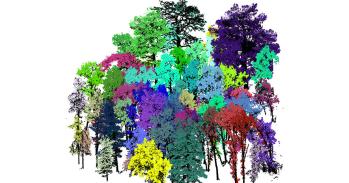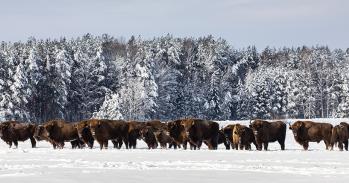
What is our place in the natural world – and how do we feel about the scientific advances that are changing the way we live? In her book Making a Good Life, Dr Katharine Dow explores the ethics of assisted reproductive technology in conversations with members of a small Scottish community dedicated to protecting the environment.
What is our place in the natural world – and how do we feel about the scientific advances that are changing the way we live? In her book Making a Good Life, Dr Katharine Dow explores the ethics of assisted reproductive technology in conversations with members of a small Scottish community dedicated to protecting the environment.
The ethical dilemmas provoked by surrogacy demonstrate that motherhood is heavily laden with moral values that inscribe expectations for proper behaviour and relationships and that are articulated in the language of nature, biology and embodied feeling.
Katharine Dow
Mid-way through her book, Making a Good Life: An Ethnography of Nature, Ethics, and Reproduction, Dr Katharine Dow describes walking on a Scottish beach and seeing, for the first time, a minke whale in the wild. It’s a grey day and all she can see is its fin dark against the waves – yet the sighting marks a turning point. Her exhilaration helps her to connect with the members of the wildlife project she is shortly to join as a volunteer.
She writes: “I began to see for myself what the fuss was about, how some people can end up devoting their lives to saving cetaceans.” But, as highly articulate as she is, she finds it hard to express in words the potency of her feelings about the whale out there in the ocean. “Something about seeing one in the wild, so close to where people were going about their ordinary business, was so strange as to seem magical.”
Dow is a social anthropologist and a research associate in the Reproductive Sociology Research Group. She has a particular interest in assisted reproductive technologies (ART), a field of medicine that is subject to fierce debate on the grounds of the ethics of “tampering with nature”. Academic research into the ramifications of ART has concentrated on those who are directly involved as active participants (for example, would-be parents undergoing treatment or children conceived via sperm donation).
Much less research has taken place into the views of the millions of people not directly involved in ART but, nevertheless, have opinions about scientific advances that, for example, enable a post-menopausal woman to conceive and carry a child. Making a Good Life helps to fill this gap by documenting in detail the views and opinions of a small community in Spey Bay, a coastal village in north-east Scotland.
The community that Dow joined for 20 months in order to carry out her research is a very particular one: it comprises a small number of professionals and volunteers working for a charity dedicated to safeguarding the local environment for wildlife. Spey Bay is a Site of Special Scientific Interest and an important habitat for cetaceans, most notably a 100-strong population of bottlenose dolphins.
The ‘good life’ in Dow’s title is a key to understanding this small community: members of the centre have chosen to make a contribution to the environment, feel passionately about the safeguarding of vulnerable species, and try to live ‘ethically’ by making careful lifestyle choices. How these people think about ART – and surrounding questions about bringing children into the world – is shaped by their wider feelings, and interactions with, the environment.
Making a Good Life blends Dow’s account of life in a tight-knit community with details of in-depth conversations with her co-workers and others about matters of reproduction, a topic that touches on their personal experiences of being, or thinking about, parenthood. She also brings into the mix an analysis of the ethical issues under discussion, the legislation controlling ART, and work by academic colleagues on questions of kinship and belonging.
As she weaves these strands together, Dow reminds us that we don’t think about, and form opinions about, some of life’s most important questions in watertight thought compartments: how we think about ART is coloured by our wider thoughts about nature – and how our lives fit into, or stand apart from, the environment. How we feel about issues of reproduction is all about the many contexts – including the families we are part of or separated from – within which we imagine our lives.
The idea of family bonds, particularly the fierce tie between a mother and her young, is something that runs deep in our picture of nature, especially so in the case of iconic species. When a minke whale calf swam into a nearby fishing harbour and was unable to find its way out, it drew crowds of concerned tourists. An adult minke spotted outside the harbour was immediately assumed to be its anxious mother.
Dow writes: “The distant figure of the calf’s putative mother waiting in the firth, apparently unable to help it back from its reckless path into the harbour, added a particular poignancy to this stranding story. People assumed that the calf would be all the more distressed because of its separation from its ‘mother’ and that reuniting them would be the best, and perhaps only, way to ensure its survival.”
While Dow’s interviewees welcome many of the techniques that help people to fulfil their desire to have a child, they are worried by the ‘unnaturalness’ of surrogacy, an arrangement by which a woman carries a child on behalf of someone else. In unpacking the process of surrogacy, she identifies the “postpartum handover of the child”, from surrogate mother to intended parent or parents, as the defining act of this agreement. “Surrogacy is troubling because the surrogate is expected to resist a natural feeling that is supposed to be so strong that refuting it would be emotionally damaging,” she writes with reference to the views expressed by her interviewees.
“The ethical dilemmas provoked by surrogacy demonstrate that motherhood is heavily laden with moral values that inscribe expectations for proper behaviour and relationships and that are articulated in the language of nature, biology and embodied feeling. Any challenge to maternal bonding, like the relinquishing of a child by a surrogate mother, seems to represent a threat to our most basic relationship and source of identity.”
In discussing questions of belonging, Dow shares aspects of her own story. Her father discovered in his mid-40s that he’d been adopted. A half-sister appears in his life and then two more. All had been adopted by different couples, who may not have been informed that their adoptive children had siblings. Dow’s father learns that his mother died giving birth to twins, unattended in a Dundee flat. Mother and twins were found dead, a tragedy that left many unanswered questions.
Events local to Spey Bay, and responses to them as they unfold, punctuate Dow’s narrative. Her book opens with the death of a sperm whale. Its carcass is washed up on the beach a 40-minute drive from the wildlife centre and people congregate to see it. Talking later, the leader of the centre describes the atmosphere as “reverential”. Onlookers are shocked to see that its lower jaw has been hacked off; there is a global black market trade in whale teeth. Whales are protected by law and a criminal investigation is launched.
Reverence and outrage are complex emotions unique to humans – as is a sense of what is ‘right’ and what is ‘wrong’. “Ethics is profoundly emotional … The public ethics of ART has commonly centred on visceral reactions and often it is difficult for people to explain why something is unethical except to say that it simply seems wrong … Listening to feelings and recognising when we have transgressed 'feeling rules' can be a way of mapping the ethical terrain,” writes Dow.
“One of the best ways of getting at ethics, of following its fluid flow as it is made and reproduced is talking. Data, in ethnographic fieldwork, are not latent in our interlocutors, waiting to be unearthed by the researcher; they come from the space between the ethnographer and the participant. To use an environmentalist metaphor, gathering data is not about extracting a commodity, but responsibly harnessing a renewable resource by redirecting its flow.”
Spey Bay is a place “where the river meets the sea”, the title of a poem by the poet John Mackie, whom Dow meets in the course of researching her book. This merging of the waters neatly echoes Dow’s own breaking of boundaries between gender studies, anthropology and travelogue. She shows us how free-flowing and ultimately elusive our ideas of the world really are.
Making a Good Life: An Ethnography of Nature, Ethics, and Reproduction is published by Princeton University Press. Dr Katharine Dow is a research associate with the Reproductive Sociology Research Group. The group supports research and teaching on the social and cultural implications of new reproductive technologies. It is led by Professor Sarah Franklin.

The text in this work is licensed under a Creative Commons Attribution 4.0 International License. For image use please see separate credits above.




